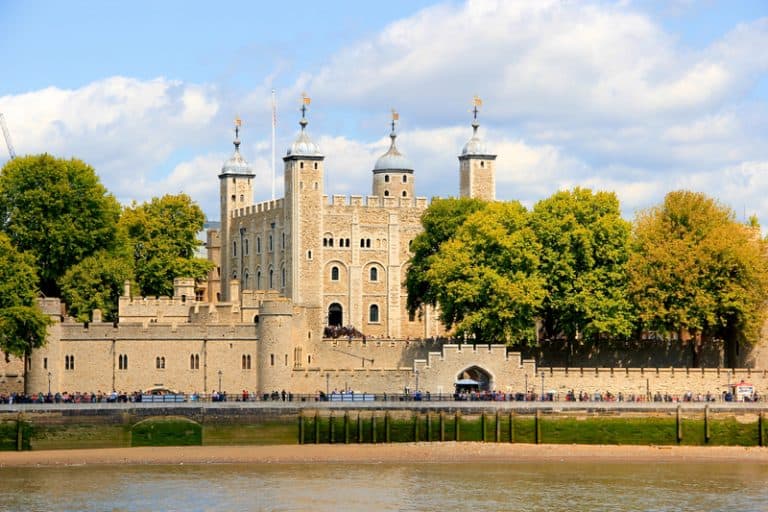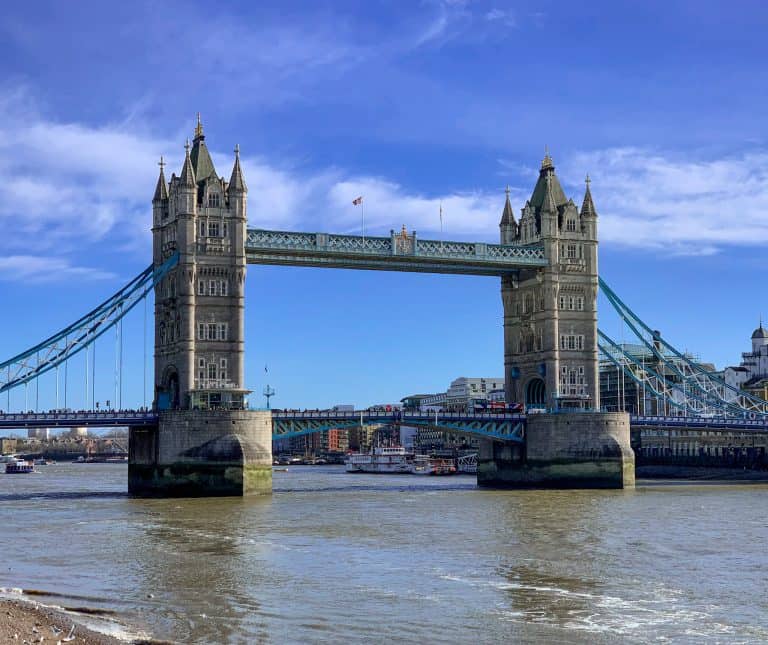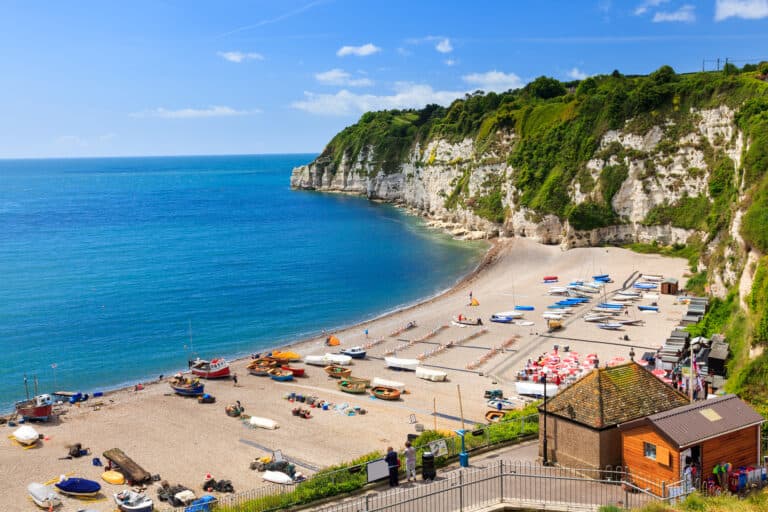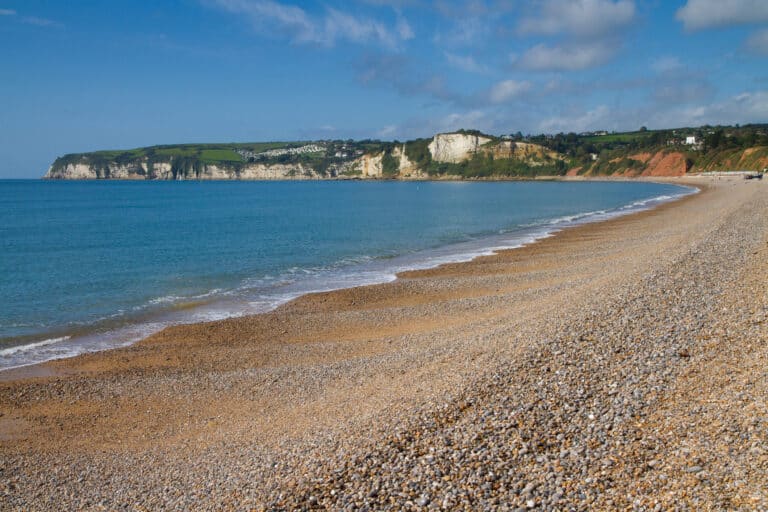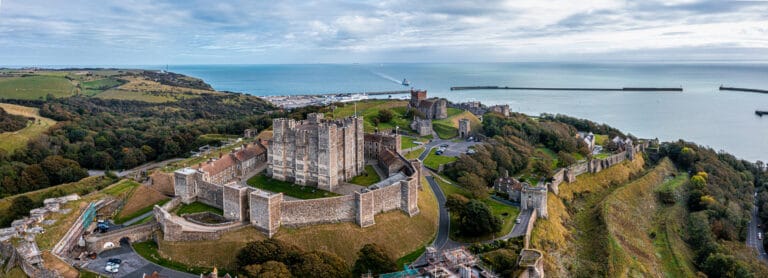Days out in East Sussex

The picturesque county of East Sussex lies on England’s south coast.
It has an extensive coastline that takes in the popular seaside resorts of Brighton, Eastbourne, and Hastings. Among East Sussex’s most notable coastal landmarks are the striking chalk cliffs of Beachy Head and the Seven Sisters.
Bordered by West Sussex, Surrey and Kent, and well connected by rail, anyone looking for days out in East Sussex will have a wealth of artistic, scenic, and shopping attractions to choose from.
It’s also steeped in history: it was near Hastings where Norman invader William the Conqueror won the famous battle in 1066 that shaped England’s destiny.
Whether it is exploring the area’s breathtaking scenery, appreciating historical sights of interest, checking out its arts and entertainment, or walking along miles of sandy beaches, East Sussex has it all.
There’s certainly no shortage of days out in East Sussex to choose from.
Read on for ideas for days out in East Sussex.
This post contains affiliate links
Days out in East Sussex
Brighton
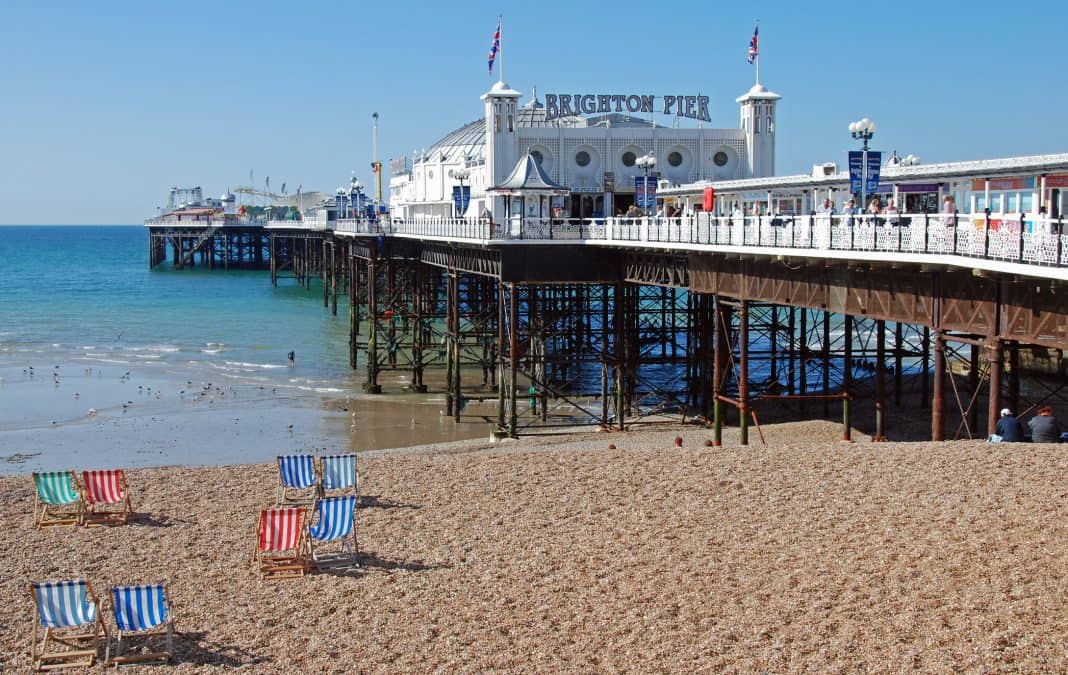
Top of many people’s lists of places to visit for days out in East Sussex is Brighton, a buzzing seaside resort that offers a diverse range of attractions for both young and old.
The seafront is one of Brighton’s defining features. Here you’ll find Brighton Palace Pier with its arcades and fairground rides, the British Airways i360 observation tower and SEA LIFE Brighton. There is also an electric railway that runs for just over a mile along part of the seafront.
The city also boasts a number of noteworthy museums, including one showcasing toys and models and one dedicated to Brighton’s fishing heritage.
One of the city’s most significant landmarks is the Brighton Royal Pavilion, a Grade I listed Regency building opened in the 1820s as a seaside retreat for George IV.
A short walk down the hill from the railway station, this is a must when you’re in the city. Even if you don’t go inside, it’s worth taking a look at the Pavilion with its distinct Indian style of architecture, complete with domes and minarets.
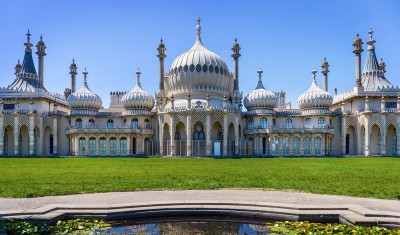
For entertainment, young crowds head to North Laine, a funky residential spot that is Brighton’s equivalent of London’s Portobello Market. Packed full of eateries and pubs, vintage clothing outlets, record shops, and theatres, it’s an excellent place to chill out.
Alternatively, why not head for the nearby Lanes? This labyrinth of narrow, twisting alleyways is a real treasure trove full of jewellers, antique shops, tea rooms, and trendy restaurants. It is also home to Brighton’s oldest pub, the 16th-century Cricketers Arms.
How to get to Brighton
Brighton has excellent rail connections to London and along the coast.
You can catch trains from London Victoria, London Blackfriars and London Bridge stations. Train times vary, depending on the service. On average, the journey takes around an hour and a quarter.
Rye
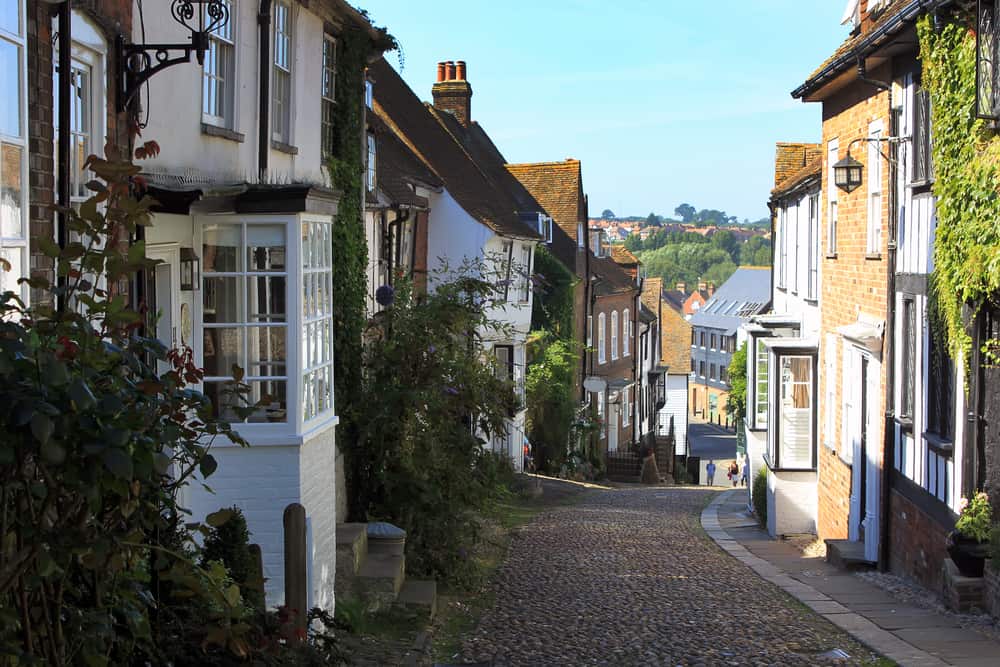
If you are looking for an idyllic getaway full of character and charm, then the medieval historic town of Rye is one to put on your list.
With its cobbled streets and half-timbered houses, Rye has much to offer. It is also a handy springboard for nearby Camber Sands (see below).
The much photographed Mermaid Street is a good starting point but take your time exploring this historical gem. Rye Castle’s Ypres Tower is another notable landmark, and the bell tower in St Mary’s Church offers a superb vantage point from which to admire the surrounding area.
You can learn more about the town’s history in the Rye Castle Museum. Also pop into Lamb House. This National Trust House was owned at one stage by the 18th-century writer, Henry James.
There are also lots of great local pubs to grab something to eat at and fascinating shops to explore, so it’s easy to make a day of it here.
And if you are particularly looking for some serenity, check out Rye Harbour Nature Reserve and its Discovery Centre.
How to get to Rye
You can reach Rye from London, via Ashford International.
Pick up a train from London St Pancras to Ashford International and then change for a local train service to Rye. The journey time is about an hour and a quarter.
Camber Sands
If you’re in Rye, it’s worth making the three-mile trip to Camber Sands, an incredible stretch of sandy beach. It is apparently the only place with sand dunes in East Sussex.

The wide expanse of sandy beach is ideal for a chill-out day; you can walk for miles, soak up the sun on a summer’s day, and breathe in the fresh sea air.
There is a good selection of amenities on hand, which include cafés, ice cream sellers, toilet facilities and car parking.
For a bit of history, there is also Camber Castle, built by Henry VIII. It can be reached from Rye along a one-mile footpath.
How to get to Camber Sands
Take the train to Rye and then head to Camber Sands by bus. It takes about 20 minutes.
Eastbourne and Beachy Head
Like Brighton and Hastings, Eastbourne is located on the coast and one of its main draws is the seafront. Here you’ll find the Grand Parade along the seafront, and the town’s Victorian pier, which features the popular Victorian Tea Rooms.
Other attractions include Sovereign Harbour Marina, Devonshire Park Tennis club, the Towner Art gallery, and the Eastbourne Miniature Steam Railway.
Outside of the town, one of the biggest local attractions is the striking Beachy Head. This huge chalk cliff overlooks Eastbourne to the west and juts out into the English Channel.
On a fine day, you should go up and wander around the headland as the views are incredible.

From here, you can go on and explore the Birling Gap. This sits between Beachy Head and the fabulous Seven Sisters, a series of chalk cliffs that drop down into the sea.

How to get to Eastbourne and Beachy Head
Eastbourne is well connected by rail to other towns along the coast and can be reached from London Victoria in around one and a half hours.
If you want to go to Beachy Head from Eastbourne, you can pick up the 13X bus outside the station. This will take you up the top of the cliff. For those with the money, you can also get a taxi.
Some particularly energetic visitors may, however, be happy to walk the three miles to the top!
You can also book tours that will take you the Seven Sisters and the South Downs National Park.
Bodiam Castle

Located near Robertsbridge in East Sussex, Bodiam Castle was built in the 14th century with a surrounding moat to enhance its defences. With its magnificent visual setting, the National Trust owned castle has something to offer all ages.
Walk across the wooden bridge, through the main gatehouse, and enter the fortress’s central courtyard, where you’ll start your tour. The interior lies in ruins, but you can learn more about the different parts of the castle, including the Great Hall and the kitchens.
Visitors can also clamber up the medieval castle’s spiral staircases to the top of its towers for great views across the area.
There are events held at Bodiam Castle throughout the year. These include a craft workshop where you can decorate a crown or shield, a medieval fair, a dragon hunt, and storytelling.
On a visit here, you can also stop by the car park and grab something to eat at the Wharf Tea-room. There is also the dog-friendly Castle View Café.
How to get to Bodiam Castle
Visitors travelling by train are advised to go to either Robertsbridge or Etchingham train stations and then pick up a taxi.
Hastings and Battle
Hastings
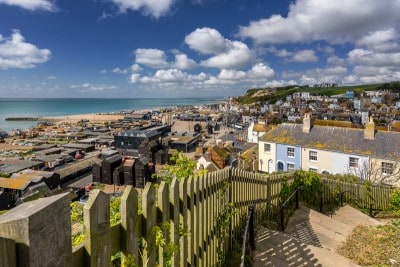
Another popular seaside getaway, Hastings is a significant fishing port rich in history and home to some unique landmarks.
Although the famous 1066 battle is named after the town, the actual battlefield site where Norman William the Conqueror defeated Anglo-Saxon King Harold Godwinson is not in Hastings. It is in fact eight miles to the northwest at Senlac Hill, near the town of Battle.
Even so, Hastings does have a Norman connection. Built on a hill overlooking the town centre, visitors can explore the ruins of Hastings Castle.
One of the most intriguing sites in Hastings is St Clements Caves. Located near Hastings Castle, this popular tourist attraction features ‘Smugglers Adventure’, an informative centre that explores the history of smuggling along the south coast.
Like Brighton, Hastings also boasts a pier, which is worth exploring. There is also a miniature railway on the beach front and two funiculars that service the West Hill and East Hill (the latter being the steepest railway in the UK). These add real character to the town.
Battle
If you want to learn more about the battle in 1066 named after Hastings, head to the battlefield site. This can be reached via a 15-minute train ride.
The most striking landmark here is Battle Abbey, built by William the Conqueror after his victory. It is said that the high altar in the Abbey marks the spot where King Harold died after an arrow pierced his eye.
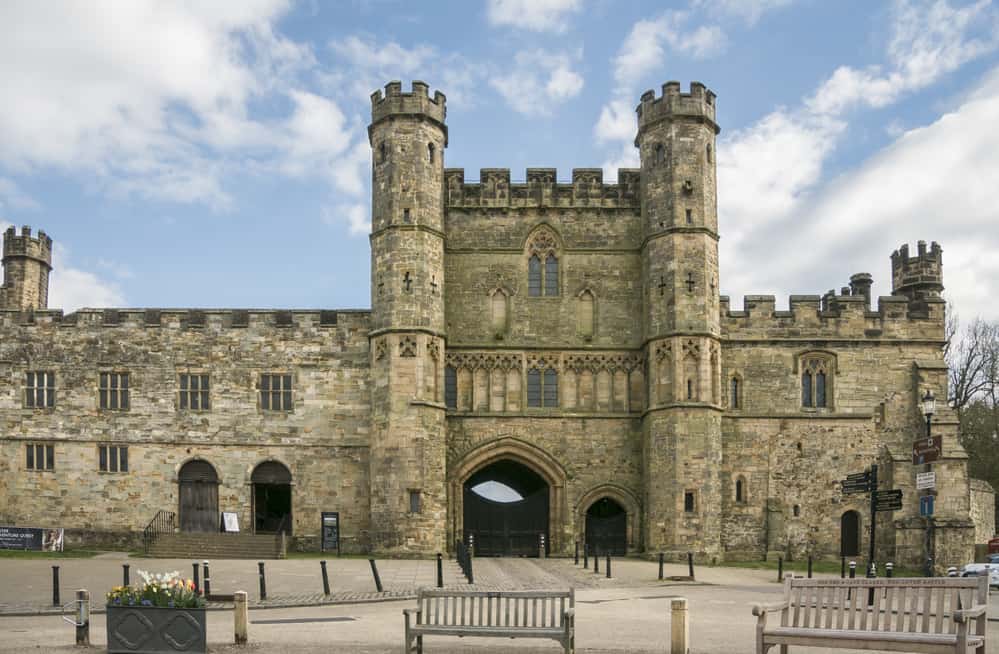
For more history, head to the town of Battle. This has an interesting museum documenting local history and a picturesque high street that you should wander around.
How to get to Hastings and Battle
Hastings is well connected to other towns along the south coast by rail and also to London.
There are several options to get here from London. South Eastern trains run from Charing Cross and the journey is just under two hours. The same train operator runs a service from London St Pancras that takes an hour and a half.
You can also catch a Southern train from London Bridge, but the journey is just over two hours.
The Bluebell Railway
For those of you who love steam trains, the Bluebell Railway is a must. It runs across 11 miles of Sussex countryside between Sheffield Park and East Grinstead stations.
It’s one of the top days out in East Sussex for train buffs.
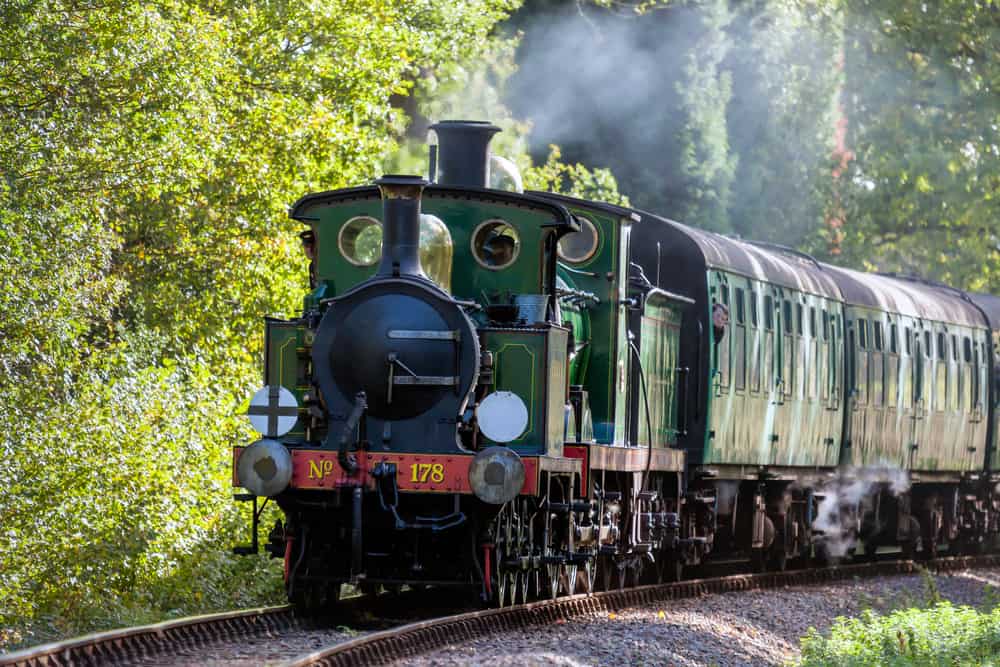
As the official website notes, the Bluebell Railway was one of country’s earliest heritage railway lines. It also boasts one of the best collections of vintage steam trains.
On your visit, you can get a real feel of the time back in the late 19th century. You get the chance to see staff dressed in clothing from the period and some of the original engines and signal boxes. You can then sit in vintage carriages as you are pulled through the beautiful countryside by a steam locomotive.
The four stations on the Bluebell Line are each preserved in different historical periods spanning the Victoria era through to the 1950s. If you want to see all of these, purchase an ‘All Day Rover’ ticket which allows you to hop on and hop off at all four.
There are also dining options on selected dates. These include afternoon tea; visit the website for more information.
How to get to the Bluebell railway
The best place to start your journey is Sheffield Park Station which is located on the A275. Visitors arriving by car should follow the brown tourist direction signs from the A22 and A23.
If you are coming from London by train, travel from London Victoria to East Grinstead.
Wineries and Vineyards
East Sussex’s mild climate makes it an ideal place to grow vines for the burgeoning English wine industry. There are in fact quite a lot of wineries and vineyards that you can visit on days out in East Sussex.
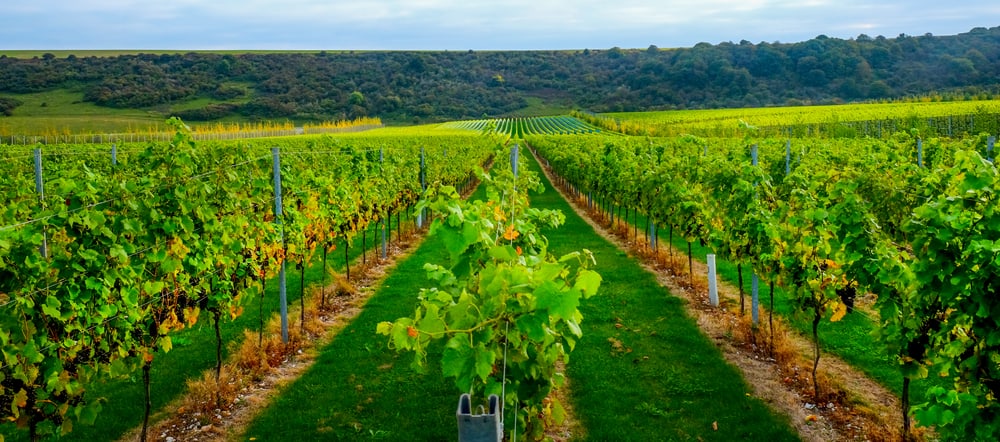
Tripadvisor lists a dozen or so wineries and vineyards on its website dotted around the county. These include the Carr Taylor Vineyard, Sedlescombe Organic Vineyard, Off the Line Vineyard, the Bluebell Vineyard Estates, and the Wildwood Vineyard.
You can book tours and do tastings, and there are also options to include a meal. It’s worth exploring the individual sites to find out more about what they individually offer, where they are located, and how to get to them.
You can also book a small group winery tour here.
Drusillas Park
Perfect for families with young children, this small conservation zoo and theme park is located close to the village of Alfriston. It is another one to add to your list of days out in East Sussex.
For its size, the zoo has an impressive variety of animals. This includes camels, donkeys, flamingos, giant grey owls, monkeys, penguins, porcupines, red pandas, and sloths.
Other attractions include a ‘Rainforest Adventure Attraction’, a soft play area, and ‘Mungo’s Adventure Maze’, where you can search for hidden treasure. There is also a large immersive “sensory play experience” called Spark and the ‘Jurassic Jungle’, where you can learn more about the dinosaurs.
Drusillas Park also offers child-friend play areas featuring swing boats, aerial walkways and a trampoline.
Visitors can grab something to eat from the three on-site cafes, and parking is free.
How to get to Drusilla’s Park
The park is just off the A27, which runs between Eastbourne and Brighton.
You can also get here by taking a train to Polegate station and picking up a taxi (take the train from either London Victoria or London Bridge if you’re travelling from the capital). Alternatively, you can get here from Eastbourne.
Bateman’s
Bateman’s is a 17th century Grade I listed sandstone building owned by the National Trust. It was once the country home of noted journalist, novelist, poet and short-story writer Rudyard Kipling.
The house is located half a mile south of the village of Burwash. It is surrounded by beautiful countryside, and the garden itself is 12 acres in size. It has an orchard, a rose garden, a wild garden, and a lily pond. There is also a watermill at the bottom of the property’s garden.
A visit here is like stepping back in time: when you go inside and wander through the rooms, you can imagine what life must have been like for Kipling as he sat here creating his famous works.
Bateman’s has a Mulberry Tea-room on site where you can tuck into some homemade cakes, as well as more substantial meals. You will also find a gift shop and second-hand bookshop.
How to get to Bateman’s
The nearest main road is the A265, and the nearest train station is Etchingham. You can catch a bus from here to Burwash and then it’s a walk of just under a mile to Kipling’s historic house.
If catching a train from London, you’ll need to pick up a train from London Charing Cross or London Bridge.
Glyndebourne
Classical music lovers will undoubtedly have to put a visit to this English country house high on their list.
Ever since 1934, the property has staged the annual Glyndebourne Festival. Here opera buffs can listen to world-class performances held in an auditorium each summer, running from May to August. The public can purchase tickets when they go on sale in March.
As the official website notes, a key part of the festival is the 90-minute interval. During this, opera fans can picnic in the gardens (you can either take one or order one from the venue) or eat at one of the three on-site restaurants.
There is also an autumn tour with a shorter interval. When you visit, you can also explore the grade II listed house’s 12 acres of gardens.
How to get to Glyndebourne
Glyndebourne is only four miles from Lewes, which is well connected to London Victoria. The train journey takes just over an hour. Visitors can call the box office and for £10, secure a return journey to Lewes station on an audience coach. However, you need to pre-book as spaces are limited.
If you are coming by car, there is a large, free audience car park.
Other ideas for things to do in London and UK short breaks
I hope this has given you a good flavour of the type of places you can visit for days out in Sussex.
There are also plenty of things to do in the south east of the UK. You may therefore be interested in some of my other posts:
- A day trip from London to Dover
- Things to do near Tower Bridge
- A visit to Kensington Palace
- Things to do in Richmond Park
- A day trip to Brighton from London
- Day trips from London by train
- A visit to Windsor
- Top tips for visiting the Tower of London
- Things to do in Battersea Park
- Days out in Hampshire
- The Portsmouth Historic Dockyard
I also have a range of other posts on short breaks in Europe on my website – click here for more information.

